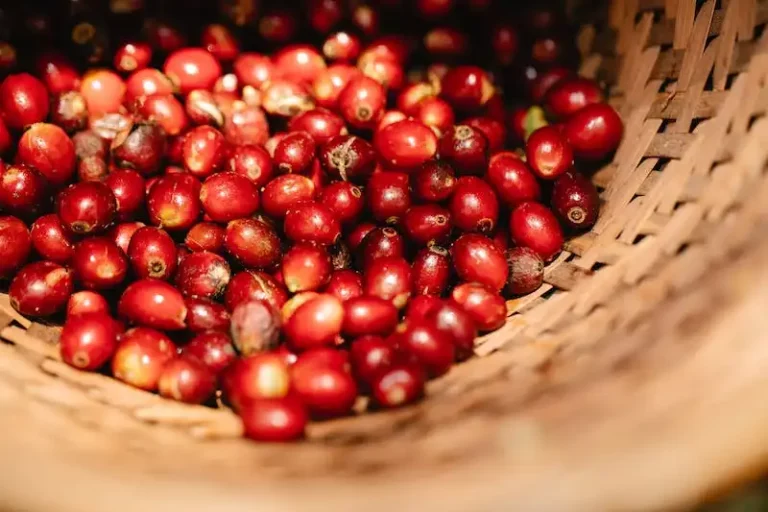Jade plants are quite popular among houseplant enthusiasts due to their beautiful blooms and their ability to thrive with minimal care. Also known as Crassula ovata, jade plants are succulents that are native to South Africa. Despite their reputation for being easy to care for, jade plants can still encounter some problems if not properly maintained.
One of the most common problems that jade plants face is overwatering. These plants do not require a lot of water, and it is important to ensure that the soil is thoroughly dry before watering again. In fact, it is better to underwater a jade plant than to overwater it. Overwatering can lead to root rot and the overall decline of the plant.
Fertilizing is another important aspect of jade plant care. These plants should be fertilized regularly during their growing phase, which is typically during the spring and summer months. A balanced, water-soluble fertilizer can be used, following the instructions on the product for the best results. However, it is important to avoid fertilizing during the winter months, as jade plants enter a period of dormancy and do not require as many nutrients.
Jade plants are also quite susceptible to common household pests, such as mealybugs and spider mites. These pests can easily be dealt with by wiping the leaves and stems with a damp cloth or using an insecticidal soap. It is also important to keep the leaves clean and dust-free, as this can help prevent pest infestations.
Jade plants can live for many years, and with proper care, can grow to be quite large. However, if a jade plant becomes root-bound in its current container, it will need to be repotted into a larger pot. Signs that a jade plant is root-bound include roots growing out of the drainage holes, the plant becoming top-heavy, and the soil drying out quickly after watering. When repotting, it is important to use well-draining soil and a pot with drainage holes to prevent overwatering.
Propagation is another common practice with jade plants. This can be done through leaf or stem cuttings. For leaf cuttings, simply remove a healthy leaf from the plant, allow it to dry and callous for a few days, and then place it in well-draining soil. For stem cuttings, remove a healthy stem from the plant, allow it to dry and callous, and then place it in moist soil. In both cases, roots will eventually form, and a new jade plant will grow.
In conclusion, jade plants are beautiful and easy-to-care-for houseplants. By following a routine watering and fertilizing schedule, addressing any pest issues promptly, and providing proper light and temperature conditions, your jade plant will thrive for many years to come.
Growing Jade Houseplants – Tips For The Care And Maintenance Of Jade Plants
Jade plants, also known as Crassula ovata, are perfect houseplants for beginners due to their easy-care nature. These succulents require proper care and maintenance to ensure their longevity and thriving. Here are some essential tips to help you take care of your jade plants:
1. Proper watering routine: Jade plants are succulents and have thick leaves that store water, so they don’t require frequent watering. Water them thoroughly and let the soil dry out between waterings. During winter, reduce the frequency of watering to once every few weeks.
2. Temperature and sunlight: Jade plants thrive in average room temperatures between 65-75°F (18-24°C). Keep them away from drafts and cold windows during winter. They need plenty of sunlight, so place them in a south-facing window or provide them with bright, indirect light.
3. Balanced soil mix: Use a well-draining soil mix for your jade plant. You can mix regular potting soil with perlite or sand to improve the drainage. Avoid using heavy clay soils as they can retain too much moisture and cause root rot.
4. Transplant when necessary: Jade plants grow slowly, but they may outgrow their pots over time. If you notice the roots growing through the drainage hole or the plant looks top-heavy, it’s time to transplant it into a slightly larger pot.
5. Avoid overwatering: Overwatering is one of the most common problems with jade plants. They are susceptible to root rot, so make sure the soil is completely dry before watering again. Remember, it’s better to underwater than to overwater.
6. Watch out for pests: Jade plants are generally pest-resistant, but mealybugs and spider mites can still infest them. Check the leaves regularly for any signs of pests and treat them with insecticidal soap or neem oil if necessary.
7. Maintain a balanced nutrition: Fertilize your jade plant once a month during the growing season (spring and summer) with a balanced houseplant fertilizer. During winter, you can reduce or stop fertilizing altogether as the plant goes into a more dormant phase.
Jade plants are not only easy to care for but can also live for many years if given the right conditions. They add a touch of natural beauty to any indoor space, making them a perfect choice for any plant lover.
Quick Facts about Jade
Jade is a popular houseplant known for its thick, succulent leaves and striking appearance. Here are some quick facts about jade plants:
- Jade plants can grow leggy if not given enough sunlight. They prefer bright light, but should be protected from direct, intense sunlight.
- Jade plants are very easy to care for and can thrive in a variety of environments, including indoor settings.
- Jade plants are often grown as houseplants because they can tolerate indoor conditions, such as low humidity and dry air. This makes them a great choice for those who want low-maintenance plants.
- Jade plants should be repotted every two to three years to allow for proper growth. When repotting, make sure to use well-draining soil and a pot with drainage holes.
- Propagation of jade plants is easy. You can grow new plants from stem cuttings; simply cut a healthy stem and allow it to dry for a few days. Once dried, plant the stem cutting in a pot with well-draining soil.
- Jade plants can easily be pruned to maintain their shape and prevent legginess. To encourage a bushier growth, pinch back the tips of the stems regularly.
- Jade plants are generally pest-resistant, but common pests like mealybugs and spider mites can infest them. If you notice any pests on your jade plant, treat it immediately with a mild insecticidal soap.
- Jade plants require infrequent watering. Water them thoroughly, but allow the top inch of the soil to dry out before watering again.
- Fertilize jade plants once a month during the growing season (spring and summer) with a balanced, water-soluble fertilizer.
- Jade plants are toxic to pets, so be cautious if you have animals in your home. Keep them out of reach or choose pet-friendly houseplants instead.
In summary, jade plants are quick-growing, low-maintenance houseplants that can easily be propagated from cuttings. With proper care, they can thrive in indoor settings, making them an ideal option for those who want to add greenery to their homes without too much hassle.
Indoor Jade Plant Care
If you have an indoor jade plant, you should know that it requires a little bit of extra care compared to other succulents. Jade plants are beautiful and unique, but they need specific attention to thrive indoors.
One important aspect of indoor jade plant care is providing the right lighting. While jade plants can tolerate lower light conditions, they still need bright, indirect light for optimal growth. Placing the plant near a window is ideal, but make sure to protect it from direct sunlight, especially during hot summer months.
When it comes to watering your indoor jade plant, less is more. Overwatering can lead to root rot and other diseases, so it’s better to underwater than overwater. Allow the soil to dry out completely between waterings and only water when the top inch of the soil feels dry to the touch. During the winter months, reduce watering frequency even more, as the plant goes into a dormant period.
Choosing the right soil is also crucial for the health of your indoor jade plant. Succulents like jades require well-draining soil to prevent waterlogged roots. You can use a commercial succulent potting mix or create your own by mixing regular potting soil with perlite or sand to increase drainage.
Another important aspect of indoor jade plant care is proper fertilization. Jades are slow-growing plants and don’t require much fertilizer, so a balanced, diluted fertilizer applied once a month during the growing season is sufficient. Always follow the instructions on the fertilizer packaging and avoid over-fertilizing, as it can harm the plant.
Pruning your indoor jade plant is a task that should be done regularly to keep the plant looking its best. Remove any dead or dying leaves, stems, or branches using clean scissors or pruning shears. You can also propagate the plant by taking stem cuttings and starting new plants.
Indoor jade plants are generally not very prone to pests, but occasionally, they can be attacked by mealybugs or spider mites. If you notice any signs of pest infestation, such as small white cottony masses or fine webbing, thoroughly wash the plant with a soapy water solution or use a commercial insecticidal soap. Repeat the treatment as needed until the pests are gone.
Finally, keeping an eye out for any signs of disease is important for the overall health of your indoor jade plant. Jade plants are generally disease-resistant but can be susceptible to powdery mildew if they are exposed to high humidity or wet conditions. If you notice a white powdery substance on the leaves, treat it with a fungicide and adjust the plant’s environment to prevent further spread.
In conclusion, taking care of an indoor jade plant requires proper lighting, watering, soil, fertilization, pruning, and pest and disease management. By following these care routine secrets, you can ensure that your indoor jade plant will grow and thrive, becoming a perfect addition to your home or office.




